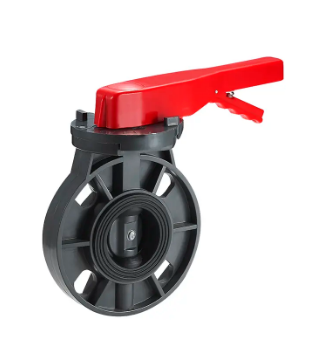Two major analysis of butterfly valve installation points: the installation position, height, and direction of inlet and outlet must meet the design requirements. Note that the direction of medium flow should be consistent with the direction of the arrow marked on the valve body, and the connection should be firm and tight. The butterfly valve must be visually inspected before installation, and the nameplate of the valve should comply with the current national standard “General Valve Mark” GB12220. For valves with a working pressure greater than 1.0MPa and a cut-off function on the main pipe, strength and tightness performance tests should be carried out before installation. It can be used after qualified. During the strength test, the test pressure is 1.5 times the nominal pressure, and the duration is not less than 5 minutes. The valve housing and packing should be qualified without leakage. Butterfly valve can be divided into offset plate type, vertical plate type, inclined plate type and lever type according to the structure. According to the sealing form, it can be divided into soft sealing type and hard sealing type. The soft seal type is generally sealed with a rubber ring, and the hard seal type is usually sealed with a metal ring.
Butterfly valve structure principle:
The butterfly valve is usually composed of an angular stroke electric actuator (0~90° partial rotation) and the butterfly valve as a whole through mechanical connection, after installation and debugging. According to the action mode, there are: switch type and adjustment type. The switch type is to directly connect the power supply (AC220V or other power level power supply) to complete the switching action by switching the forward and reverse directions. The adjustment type is powered by AC220V power supply, and receives the preset parameter value 4~20mA (0~5 and other weak current control) signals of the industrial automation control system to complete the adjustment action.

Butterfly valve applications:
Butterfly valves are suitable for flow regulation. Since the pressure loss of the butterfly valve in the pipeline is relatively large, the firmness of the butterfly plate to withstand the pressure of the pipeline medium should also be considered when it is closed. In addition, the operating temperature limitations of the elastomeric seat material at elevated temperatures must also be considered. The structure length and overall height of the butterfly valve are small, the opening and closing speed is fast, and it has good fluid control characteristics. The structure principle of the butterfly valve is most suitable for making large-diameter valves. When the butterfly valve is required to be used for flow control, the most important thing is to correctly select the size and type of the butterfly valve so that it can work properly and effectively.
Butterfly valve is suitable for fresh water, sewage, sea water, salt water, steam, natural gas, food, medicine, oil and various acids that require sealing, zero leakage in gas test, high life expectancy, and working temperature between -10 degrees and 150 degrees. Alkali and other pipelines.
Post time: Feb-21-2022